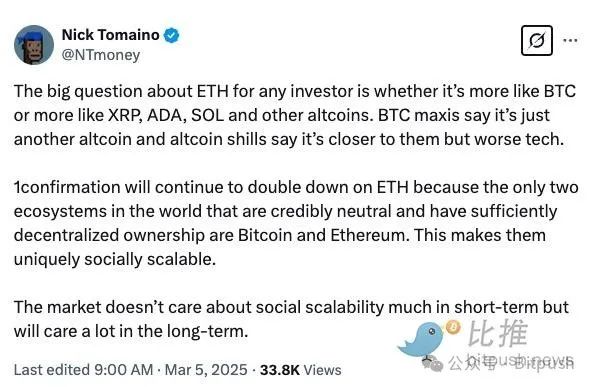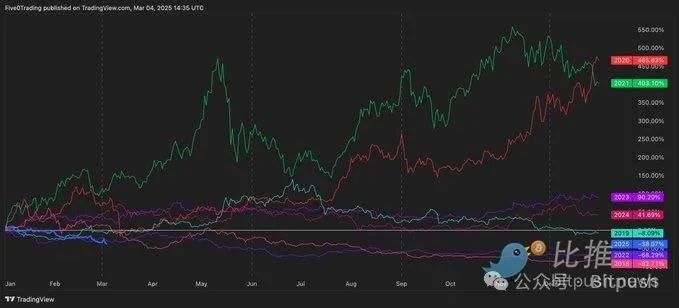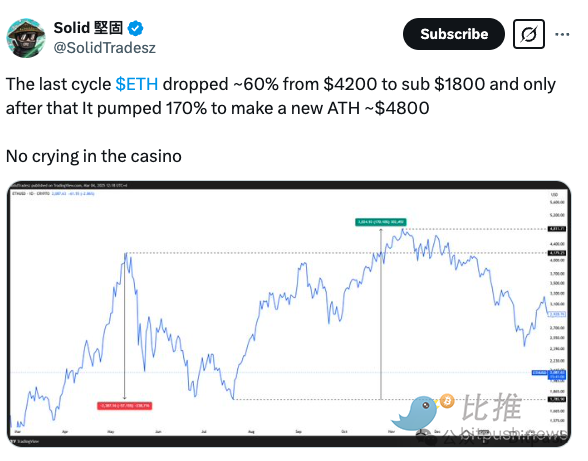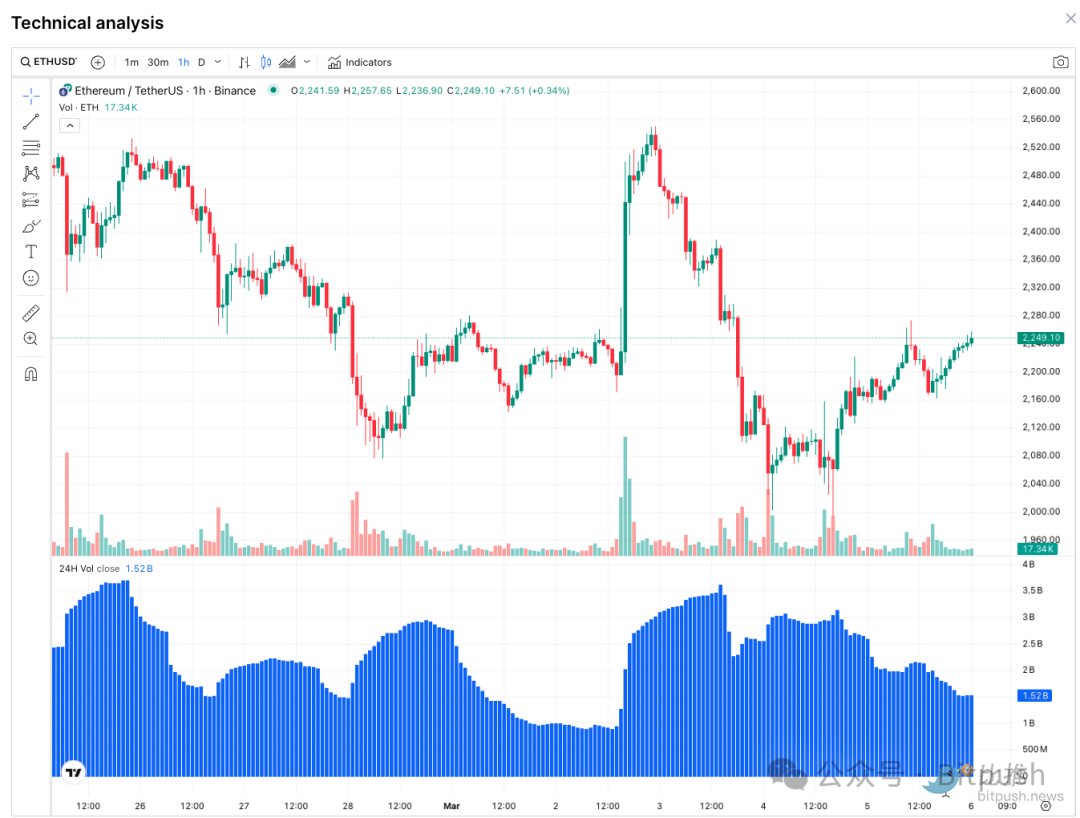Industry tycoons are "resisting against the trend", will Ethereum have a chance to rise?

Reprinted from panewslab
03/06/2025·1MThe recent decline in Ethereum has really made many investors feel heartbroken.
A latest report from Matrixport pointed out that Ethereum's global search popularity has approached its all-time low, which often indicates a further sharp drop in prices. The decrease in on-chain activity of ETH and the decline in total locked value (TVL), coupled with the market speculation about the potential strategic digital asset reserves of the United States, and the superposition of multiple factors has led to a significant weakening of the demand for Ethereum native token ETH. The current market environment shows that weak demand for ETH has become an indisputable fact.
However, there are still many firm supporters of the Ethereum ecosystem in the industry. ABCDE founder Du Jun publicly stated on March 3 that although increasing holdings in Ethereum in the past year resulted in a book loss of more than US$20 million, he still firmly believes in the value of Ethereum and even considers selling other assets to lower the cost of ETH holding.

Nick Tomaino, founder of the well-known investment institution 1confirmation, even bluntly stated on social media that they will "double their bets on ETH" because in his opinion, Ethereum is one of the only two "trusted, neutral and sufficiently scattered" ecosystems in the crypto world, with unique long-term "social scalability".

Faced with the continued sluggish market sentiment and the "counter-trend support" of industry leaders, what is the future of Ethereum?
Historical cycle comparison: script reenactment?
Some market observers pointed out that Ethereum's recent performance is similar to the bear market trends in 2018 and 2022. Anonymous trader 5.0 Inverted said Ethereum is "following the price trends of bear markets in 2018 and 2022." The data below shows that Ethereum fell 82.71% and 68.29% in 2018 and 2022 respectively, and continued to decline in the second half of that year.

Another trader pointed out that Ethereum had fallen 60% from $4,200 to $1,800 in the last cycle, and then rebounded 170% in the next few months and eventually hit an all-time high of $4,800. Drawing on the experience in 2021, Ethereum may continue to maintain its current weakness before rebounding at the end of the year.

Technical analysis: Interleaving of long and short signals
As of writing, Ethereum has rebounded from a low below $2,000 to around $2,240, finding strong support near the $2,000 mark, a level that matches the key ICT Best Trade Entry (OTE) level that traders are closely watching and temporarily blocks the downward momentum of prices.

Judging from the hourly chart, the ETH price shows a mixed signal. After briefly breaking through the local resistance level of $2,262, the price began to fall, and the bears may further lower the price in the short term.
The daily chart conveys a more positive message. Ethereum price began to rebound after rebounding at the $2076 support level. In the medium term, no clear reversal signal has been shown. Traders should focus on the key areas of $2,000. If it falls below this level, the price may quickly test the $1,750 area.
Market analysts expect Ethereum to consolidate broadly between $2,000 and $2,500, and this range of fluctuations may continue until a breakout signal appears, indicating the next major market trend. Both bulls and bears are paying close attention to these key levels.
If Ethereum can maintain above $2,000 and accumulate momentum, the current stage may evolve into a new bullish wave. Chart analyst Ali Martinez believes that Ethereum’s most critical resistance is at the $2,400 mark, with more than 2.41 million investors buying 62.68 million ETH. For analysts, breaking through this level could "pave the way for a $3,000 rebound."
CryptoQuant analyst MACD believes that the Ethereum MVRV ratio has fallen below 1, putting Ethereum in an undervalued area. Historically, this level has seen a sharp rise in prices in previous bull market cycles. Furthermore, MACD notes that Ethereum cumulative addresses (addresses that continue to receive ETH but are never extracted) have increased dramatically, indicating that institutional investors are building their positions during the current market downturn.
However, MACD also acknowledged that broader economic conditions, such as U.S. liquidity and monetary policy, may continue to put downward pressure on asset prices, market sentiment has not turned completely to optimism, and investors need to remain cautious and wait for more clear signals to verify.


 jinse
jinse